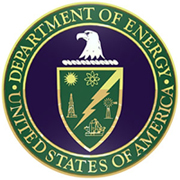 Rinaldo Gonzalez Galdamez (Mechanical Engineering) About DOE Fellow Prior to start working at ARC, Rinaldo participated in a summer internship program at Pacific Northwest National Laboratory (PNNL) in Richland, WA. Under the mentorship of Dr. Sriram Somasundaram, he developed a research project using the theme of a “Zero Energy Home”. He completed a report for DOE after having conducted computer simulations on a residential load profile of a typical home in the Tri-Cities area and analyzed how one could supply the electrical loads with a solar photovoltaic system. The goal of the study was to provide the local community with a technical assessment describing the potential of solar technologies for residential use in the region with the purpose of decreasing electricity consumption and developing energy self-sufficiency. |
|
DOE Related Projects As part of this project, a presentation titled “Lattice Boltzmann Simulation of Bubble Dynamics under Gravity” was given by Mr. Ngachin at the 7th International Conference for Mesoscopic Methods in Engineering and Science (ICMMES) at the University of Alberta in Edmonton, Canada. As a result of this intensive research work, a manuscript is being prepared for journal submission, for which Rinaldo is one of the coauthors. The objective of this project is to develop a comprehensive 2D and 3D CFD model of a pulsed -air mixer, one of the mixing technologies used for Hanford’s HLW tanks. Within this project, Rinaldo’s tasks have includedthorough literature review on multiphase LBM and classical CFD models. Extensive simulations with LBM and mostly with COMSOL Multiphysics have been performed and analyzed. Rinaldo has validated multiphase flow simulations using the level set method in COMSOL and compared the results with an LBM code used in serial and parallel modes.
Pipe Unplugging Technology Whirling Nozzle Sprayer Technology
Hot Cell Interior before and after Coating |





